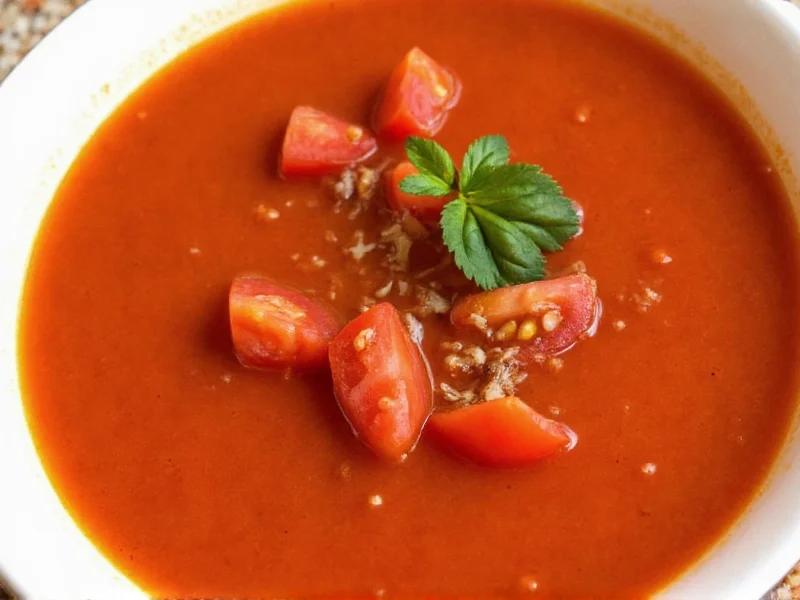Why Frozen Whole Tomatoes Excel in Tomato Soup
Many home cooks overlook frozen whole tomatoes as a soup ingredient, assuming fresh or canned options are superior. However, frozen tomatoes harvested and processed at peak ripeness deliver consistent quality year-round. The flash-freezing process preserves lycopene and natural sugars better than canning, which often requires added preservatives and undergoes high-heat processing that alters flavor profiles.
Professional chefs increasingly prefer frozen whole tomatoes for soup bases because they offer predictable acidity levels and eliminate the inconsistent texture sometimes found in off-season fresh tomatoes. When properly prepared, frozen tomatoes create a smoother puree with less seed and skin residue than canned varieties.
Proper Preparation Techniques for Frozen Tomatoes
Thawing method significantly impacts your soup's final texture. For optimal results:
| Thawing Method | Time Required | Best For |
|---|---|---|
| Refrigerator thawing | 8-12 hours | Recipes requiring firm texture |
| Cold water bath | 30-60 minutes | Immediate cooking needs |
| Direct from frozen | N/A | Simmering soups and stews |
After thawing, gently squeeze tomatoes to remove excess liquid—this prevents watery soup. Save the strained liquid for stock or adjust seasoning accordingly, as valuable flavor compounds concentrate in the pulp.
Classic Tomato Soup Recipe Using Frozen Whole Tomatoes
This foundational recipe yields 4 servings of rich, velvety soup in under 45 minutes:
Ingredients
- 2 pounds frozen whole tomatoes, thawed and drained
- 1 large yellow onion, diced
- 3 garlic cloves, minced
- 2 tablespoons olive oil
- 1 cup vegetable broth
- 1 teaspoon dried basil
- ½ teaspoon red pepper flakes (optional)
- Salt and freshly ground black pepper to taste
Instructions
- Sauté onions in olive oil over medium heat until translucent (5-7 minutes)
- Add garlic and cook for 1 minute until fragrant
- Incorporate thawed tomatoes (with any accumulated juices)
- Add vegetable broth, basil, and red pepper flakes
- Simmer uncovered for 25-30 minutes, stirring occasionally
- Cool slightly, then blend until smooth using an immersion blender
- Season with salt and pepper to taste
Flavor Variations and Enhancements
Elevate your frozen tomato soup with these chef-approved modifications:
- Creamy version: Stir in ¼ cup heavy cream or coconut milk during final simmer
- Rustic style: Add 1 diced carrot and celery stalk with onions for depth
- Roasted flavor: Toss thawed tomatoes with olive oil and roast at 400°F for 20 minutes before adding to soup
- Umami boost: Include 2-3 dried porcini mushrooms steeped in broth
Storage and Freezing Guidelines
Properly stored tomato soup maintains quality for up to 3 months. Follow these best practices:
- Cool soup completely before storing (prevents condensation)
- Use airtight containers with ½ inch headspace for expansion
- Label with date and contents
- Thaw frozen soup in refrigerator overnight before reheating
- Avoid repeated freeze-thaw cycles which degrade texture
Troubleshooting Common Issues
Address these frequent challenges when using frozen tomatoes:
- Watery consistency: Simmer longer to reduce liquid or add tomato paste
- Bland flavor: Balance with 1 teaspoon sugar or splash of balsamic vinegar
- Excessive acidity: Add small amounts of baking soda (⅛ teaspoon at a time)
- Texture issues: Strain through fine mesh sieve after blending











 浙公网安备
33010002000092号
浙公网安备
33010002000092号 浙B2-20120091-4
浙B2-20120091-4